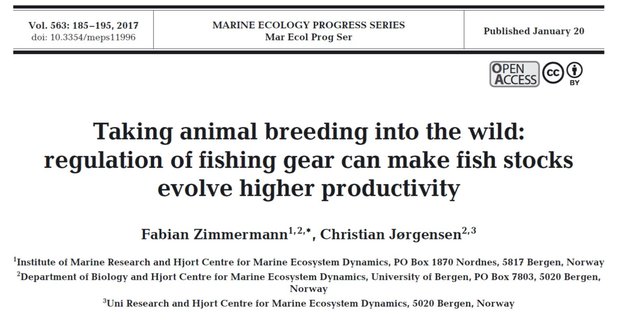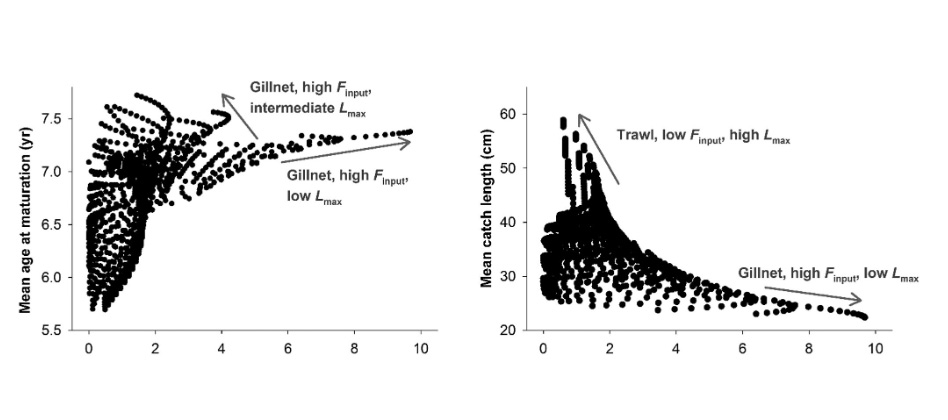
Gear selectivity as a key to evolutionarily enlightened management?
As trade-offs are inevitable among the objectives in fisheries management, the maximization of yield from a fishery is traditionally considered to be in conflict with the mitigation of its evolutionary impacts. However, this perspective focuses mostly on fishing mortality alone, whereas modern fisheries management often neglects the role of gear selectivity. In a new study published in Marine Ecology Progress Series, ConEvolHer members Fabian Zimmermann and Christian Jørgensen investigated in Northeast Arctic cod how fishing gear and size selective fishing affects population dynamics, catch and potential trade-offs between management objectives.
Fishing-induced evolution is commonly believed to be an inevitable result of fishing with mostly negative effects, which can be only reduced with lower fishing pressure and thus stands in conflict with the goal of maximizing sustainable catches. This perspective also stems from the fact that today’s fisheries management focuses mostly on fishing mortality alone, although theory and the literature show that size selectivity is equally important in determining the degree and direction of evolutionary change. In their recent paper published in Marine Ecology Progress Series, Fabian Zimmermann and Christian Jørgensen investigated therefore in an evolutionary model of Northeast Arctic cod how the size selectivities of different fishing gear mixes in combination with a range of target sizes and fishing intensities affects the performance of the stock and fishery against major management objectives.
The results suggest that targeting low to medium sized fish with a large proportion of dome-shaped selectivity (as typical for gillnets) within the fishery can prevent or even reverse the decrease of maturation age while resulting in the largest sustainable catches. This shows that the use of fishing selectivity adapted to the specific life history of a species can create a zone of consensus between the avoidance of unwanted evolutionary changes and the sustainable maximization of yields. In this setting, dome-shaped selectivity leads to very little harvest pressure on big, old and particularly productive fish. Their productivity can subsequently sustain large removals of smaller individuals. At the same time, this creates evolutionary benefits for individuals to grow through the size range with the highest fishing pressure and mature later, reversing previous decreases in maturation age. This harvest strategy comes, however, at the expense of the fish quality in the catch, represented by the mean catch size, and results in a comparably small yet productive spawning stock. Both of these objectives, fish quality and stock size, are maximized when only very large fish are targeted by the fishery. The study underlines that fishing selectivity is a crucial tool within an evolutionarily enlightened management to achieve and potentially align specific management objectives.
The full article is available here free of charge

Potential trade-offs between major management objectives: while there is a clear conflict between total yield of a fishery and the mean fish length in the catch (right side), gillnet-type selectivity can resolve yield maximization and mitigation/reversal of evolutionary impacts in a zone of consensus (left side). All points represent an end point of a simulation using a specific management regime.
